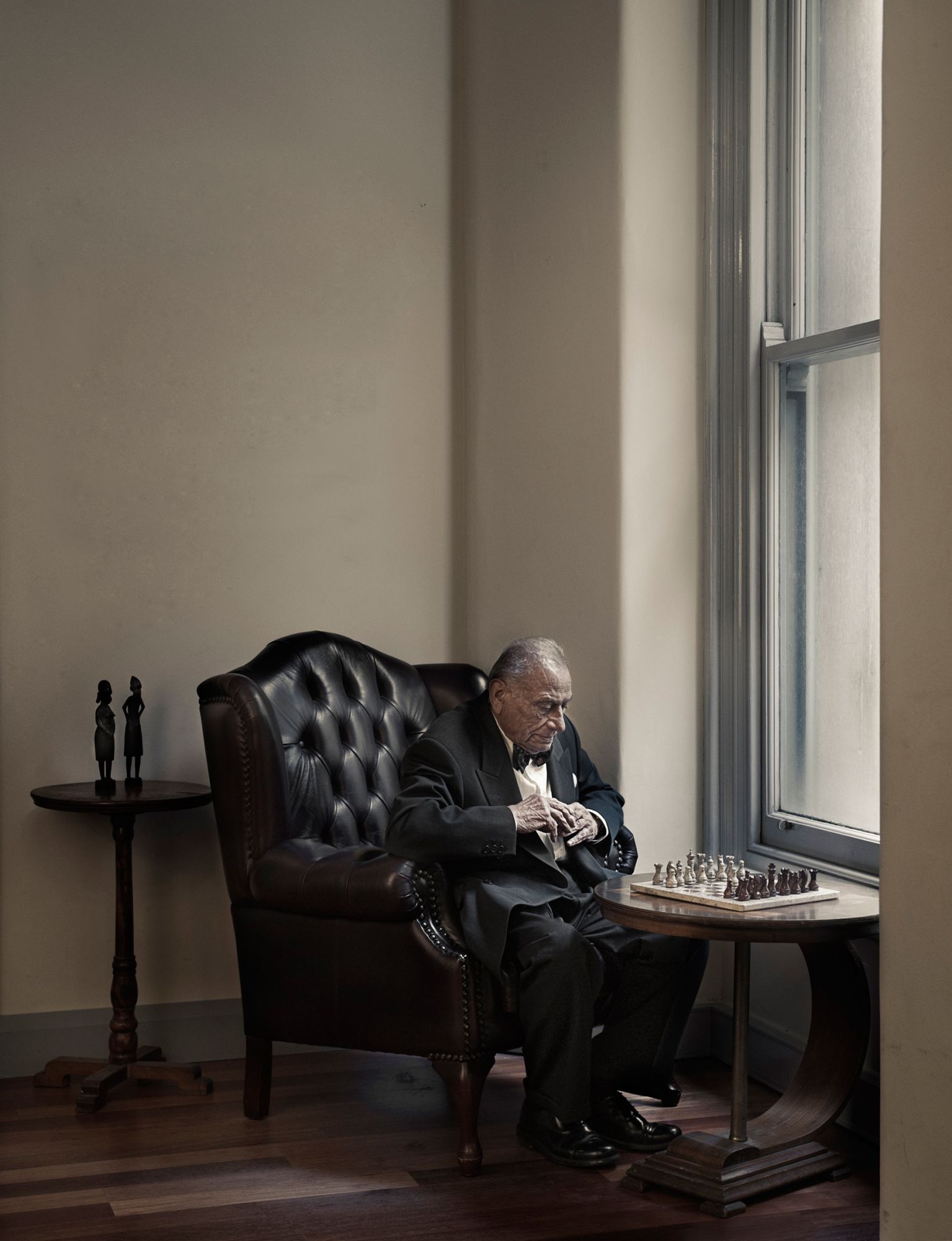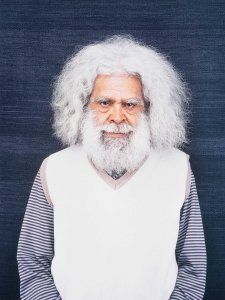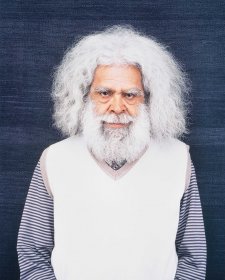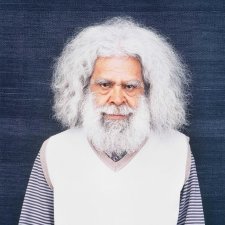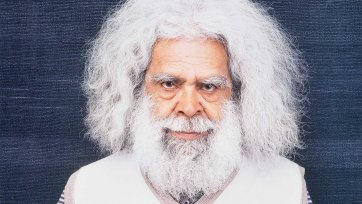Dr Hassan Rahim was a preeminent dental surgeon in Uganda in the 1970's. When Idi Amin came to power, he dreamt that the Asians held the countries' wealth. He evicted most of the Asian community overnight, many at gunpoint. Hassan and his wife fled the country with what few possessions they could carry, including the tiny figurines depicted in this portrait. A keen chess player and a true gentleman, Hassan now resides in Australia with his family. The intent of this portrait was to capture the sense of dignified sadness and isolation caused by his forced relocation from his past in Uganda.
Questions
1. What do the objects and furnishings in the portrait tell you about the subject of the portrait?
2. How would you describe the pose and expression of Dr Rahim in Campbell's portrait?
3. Dr Rahim would 'only wear a suit' for his portrait sitting with Campbell. How important is the subject's attire in your interpretation of the portrait?
The photographer and the portrait -
an interview
How do you define your own practice?
Portrait photographer with own business and studio in Collins St, Melbourne.
Do you have a website or are you represented on a website?
It's a family business and we have two websites: generationsphotography.com.au for our family portraits and headshot.com.au for the corporate headshot business.
What is your relationship to the subject?
The subject, Dr. Rahim, is the father of our client Fem Hunter. We met during the Hunter's family portrait session. We got on very well and have enormous respect for one another!
Was the photograph a result of a constructed or candid encounter?
A week prior to each family portrait session, we meet with a representative of the family to discuss preferred image styles, wardrobe, possible props etc. so we can create a truly meaningful experience with images tailored for each family. When Fem Hunter told me her father's life story, and that he would "only wear a suit" I knew that we had the potential to create something extraordinary. For this portrait, I wanted to create an old Gentlemen's clubroom feel, using a classic armchair and a couple of art deco tables with cold, bluish natural light streaming in. This cold coloured light imbues a sense of loneliness, and the small man in a big chair adds to the sense of diminished scale.
Describe the technical aspects of your photograph?
Photograph was captured on a Nikon D700, 28-70 ml F2.8 lens, 1/30th sec at f5.6, using a combination of natural light with a soft tungsten fill. The RAW file underwent significant Photoshop treatment to yield the final result - some 21 different Photoshop layers are used to create the desired look and feel of this image.
How was the final print made? Is this print one of an edition?
Printed on inkjet printer by Brilliant Prints on Fine Art Inkjet Paper. At present there are only two prints made. The stock used is Breathing Colour Optica One Velvet Cotton Rag - 300gsm (acid and linen free fine art guild trade approved).
Describe your consideration of scale, mounting and framing in the presentation of your portrait?
I was looking to create a classic, elegant feel, but not to dominate the content - so the choice of timber was important.
Did you employ any digital imaging processes to create your final image?
Typically I like to keep my post production to a minimum, although in this case I thought the black and white treatment would suit the image. Essentially I took the colour file and reproduced it in black and white then spent some time working very broadly on contrast and sharpening to achieve a result I was happy with.
Who would you nominate as your influences?
Norman Parkinson, Sir Cecil Beaton, Nick Knight, Annie Leibovitz.
Do you have any advice for a beginning photographer (eg. students)?
Get to know your subject and their story before you pick up the camera. Work on your people skills so you can gain their trust and then get the most from your subject.
